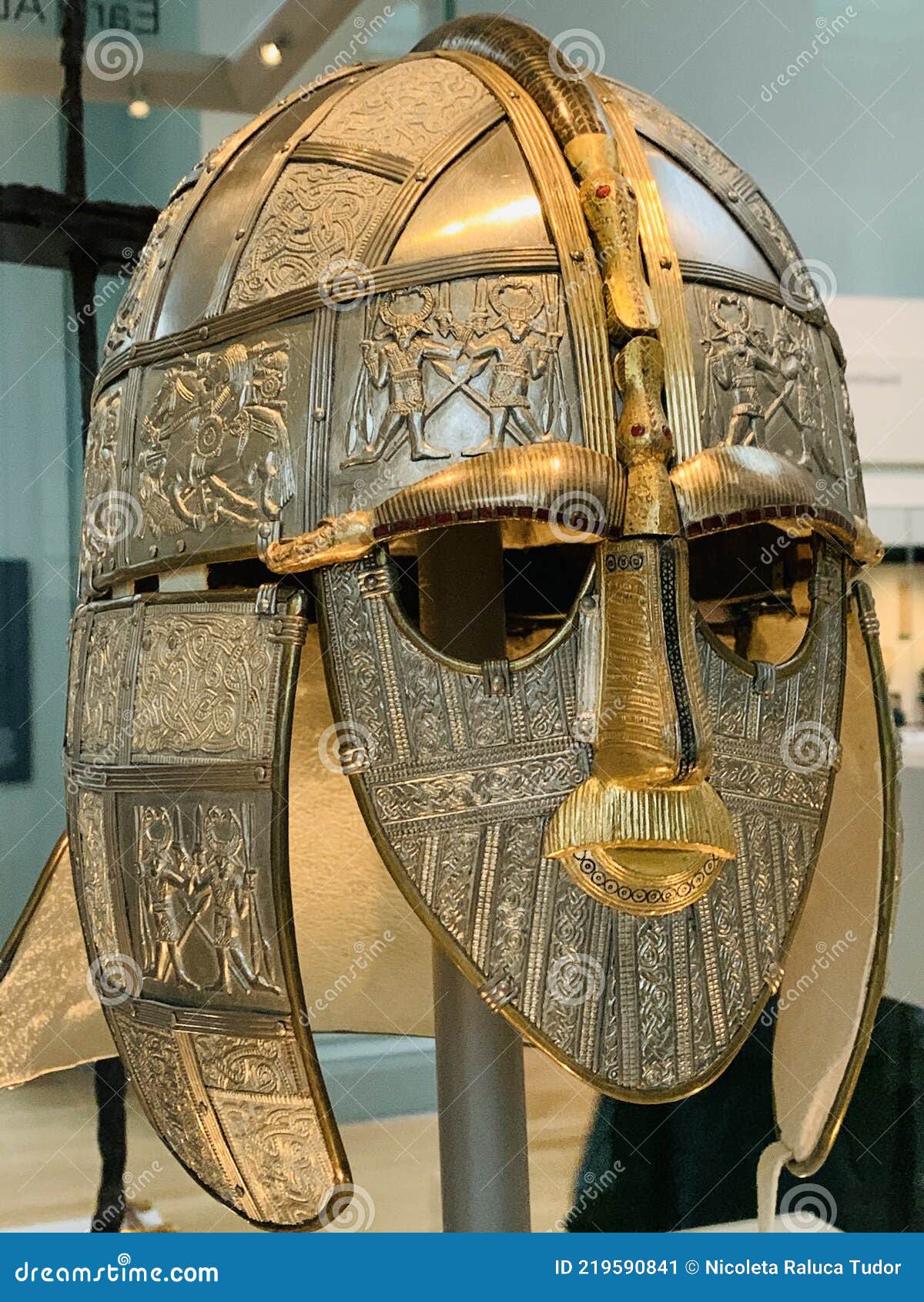

The helmet has long cheek-guards with narrow elliptical eyeholes, providing excellent protection to the face and throat, and has a sweeping tail to protect the back of the neck. The Met Museum holds a gorgeous Corinthian helmet with matching greaves (leg-armor), which would have been part of an elite warrior’s panoply, his personal armory. The ancient Greeks had developed simple prehistorical helmet forms into a more complex construction. Clearly, from the dawn of human civilisation, helmets were already wrapped up in status and power. It is shaped as to depict the wearer’s hair, complete with centre-parting and man-bun, and has been theorised to represent the wearer’s status of the ‘King of Kish’ who ruled over both of the states of Sumer and Akkad.

The electrum Helmet of Meskalamdug was found as part of a huge trove of Sumerian burial treasures, and it is likely one of the oldest surviving helmets. Archaeological excavations at the Sumerian city of Ur have turned up simple copper and copper-alloy skullcaps, which seem to be represented pretty faithfully in Sumerian art, such as on the military mosaic known as the Standard of Ur where they are shown as being held on with a chinstrap. Clearly, even the most ancient peoples realised that head injuries had a less-than-ideal effect on people in general, and that they should to be avoided if at all possible.

The earliest helmets that we have historical evidence for date from around the 26 th -century BCE, to the Mesopotamian cities of Sumer in modern-day Iraq. But fear ye not! If we approach the history of the medieval battle helmet from the beginning, building from first principles and charting the differing roles and statuses of various medieval helmets, you’ll be able to quickly narrow down exactly which helmet says what you want your re-enactment or LARP impression to say. Keep in mind that more points can lead to more rolls on the supply crate, but choosing to fletch all of your roots is a decision only you can make.Introduction: There is a boggling array of modern reproduction medieval helmets for sale.
#Djkappa helm of raedwald free#
After earning 500 points, feel free to burn regular bruma roots for the best experience rate. The best place to fletch is right where we recommend you started the fight to minimize damage from snow storms. That will let you know that you need 275 more points to get a reward, so you should fletch 11 bruma roots in your next inventory. When you go to chop more bruma roots, subtract 500 and 225 (This can be approximate) and divide by 25. For example: You light the brazier and proceed to chop and burn 20 bruma roots. Also, keep in mind that burning a regular bruma root grants 10 points while burning a bruma kindling grants 25 points.

Remember, you only need 500 points to guarantee the experience reward and a supply crate. Our recommendation for the average player is to chop and burn one inventory of roots, then chop another inventory and only fletch the amount required to reach 500 points before burning them. The latter, who are focused on time efficiency are known to say things like “Why fletch?”, which might be the most annoying thing you will see anyone say while you are fighting the Wintertodt. And on the other, you have regular accounts who just want to be in and out of Wintertodt as fast as possible with that sweet Level 99 Firemaking. One one hand, you have people who want more loot, perhaps ironman accounts who should definitely accumulate those extra points if they can. Whether or not to fletch the Bruma Roots is quite the topic of discussion.


 0 kommentar(er)
0 kommentar(er)
